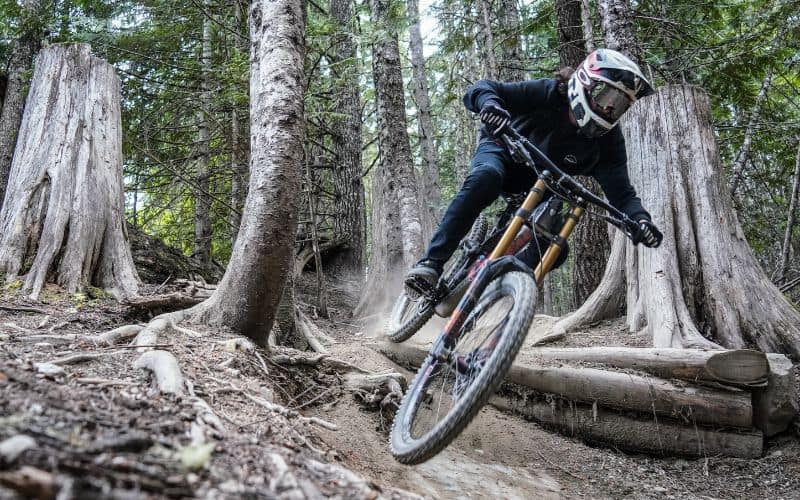We all know that wearing a helmet is essential to any avid MTB rider’s safety. It protects your skull in case you crash and decreases your likelihood of getting a concussion.
There’s no doubt that any helmet is better than no helmet, but does that mean every helmet will get the job done?
Can you use a motocross helmet for mountain biking? What’s the difference between a motocross helmet and an MTB helmet?
Keep reading to find out!
Contents
Can I Use a Motocross Helmet for Mountain Biking?

Yes, but it’s not advisable.
If you’re in a pinch, using a motocross helmet will offer you some protection during a crash and can be used for mountain biking.
However, motocross and MTB helmets are built differently for different purposes.
Because of this, a motocross helmet will not be as effective in protecting you as an MTB helmet will.
The best way to understand this is to compare motorbikes and mountain bikes. As the name suggests, motorbikes have a powerful motor, allowing them to go very fast.
Mountain bikes, on the other hand, are human-powered and can not go as quickly.
The way they move is also different, as mountain bikes can make sharper turns, allowing riders to breeze through windy paths, while motorbikes are a bit more difficult to maneuver.
The Global Mountain Bike Network has a great Q&A answering this question. Watch it below!
Motocross Helmet vs. MTB Helmet
There are a few differences between motocross and MTB helmets.
Motocross and MTB helmets weren’t made equal, from their overall design to the materials used.
Let’s look at the key differences between a motocross and MTB helmet, and how they can affect your riding experience.
Material
Motorbike helmets are usually made of a layer of foam, surrounded by another layer of fiberglass or polycarbonate plastic.
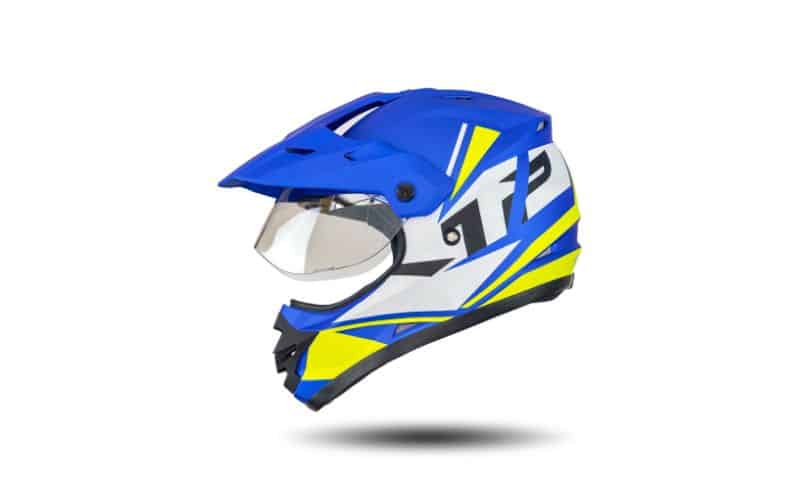
The rigid outer layer prevents your head from being dented by anything hard or pointy you may fall on, like rocks or pavement.
The inner foam layer cushions your head from slamming against the hard outer layer, further protecting it.
These materials are very sturdy and, consequently, quite heavy.
Like motocross helmets, bike helmets are also made of two layers. The inner layer is made of an expanded polystyrene foam, which offers protection while still being lightweight.
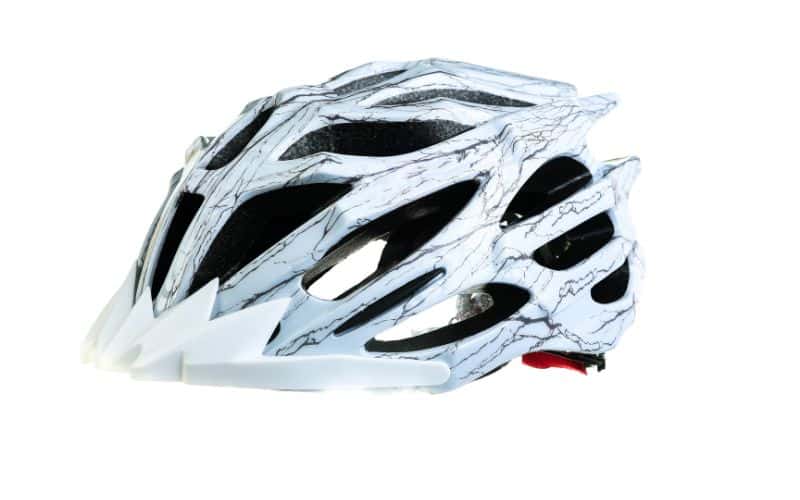
The outer layer is made of polycarbonate plastic, the same material motocross helmets use. However, bike helmets’ outer layer is much thinner, and therefore, much lighter.
While motocross helmets’ materials offer more protection, MTB helmets are thin enough to protect the wearer, without weighing them down.
Protection
One of the most important things to consider when buying a helmet is the protection it offers.
Since motocross and MTB helmets protect against different kinds of crashes and impact speeds, they’re designed to protect you in different ways.
For instance, motocross helmets’ soft foam cushions your head during high-impact crashes.
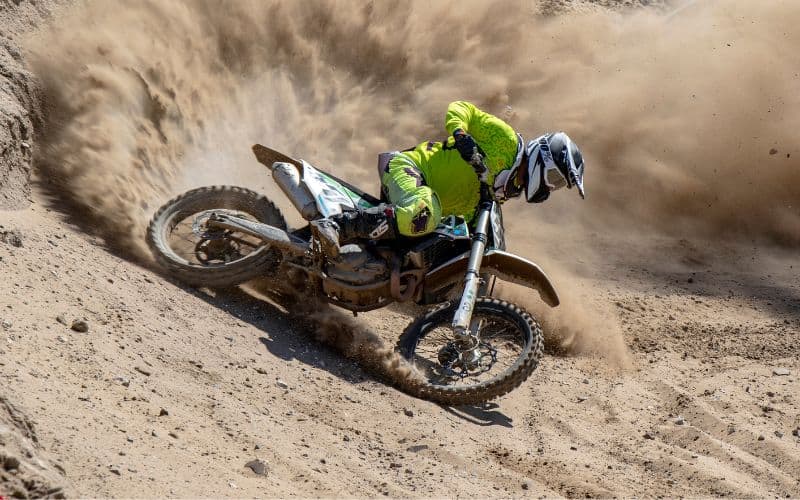
However, your head will end up colliding against the foam and the inside of the helmet’s polycarbonate shell. Though you will probably survive, your brain will be knocked about inside your skull, possibly leading to a concussion.
Though this is the best outcome for most motorbike accidents, this can be easily avoided during bike crashes by wearing the right helmet.
MTB helmets’ inner layer is made of expanded polystyrene foam that can be crushed by the weight of your skull. This is enough to protect your skull without giving you a concussion.
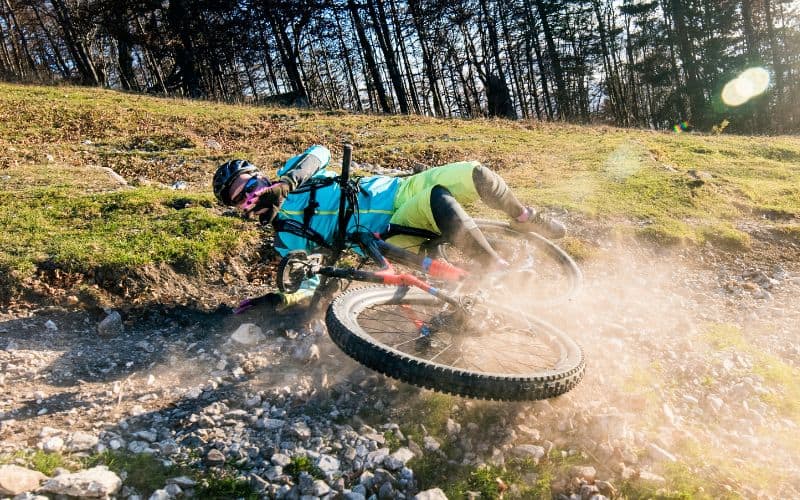
Remember, bike crashes are far less intense than motorbike crashes, requiring different helmets to protect the rider.
Aerodynamics
When biking it’s important to consider your aerodynamics to combat air resistance, maneuver your bike through tricky terrain, and control your speed.
However, since motorbikes are powered by a motor, they’re less affected by aerodynamics and environmental factors.
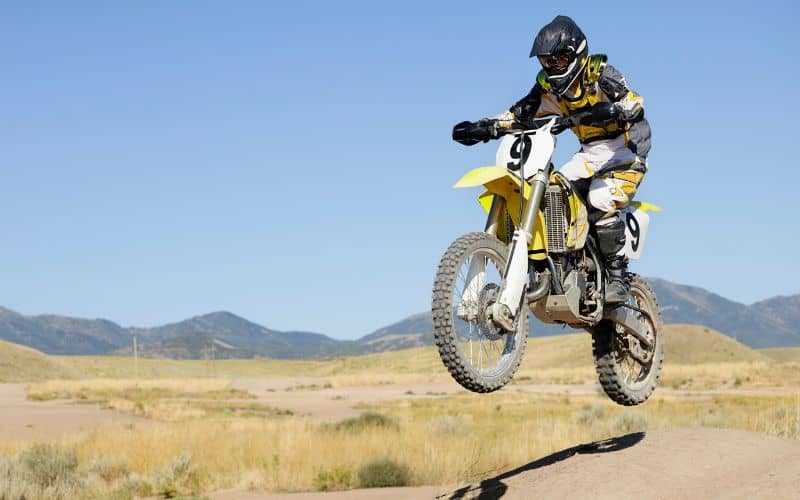
While motocross helmets may also have a tapered visor, their overall shape and construction do not help make the rider more aerodynamic. They’re usually very clunky, which adds to their durability, but makes them less beneficial to MTB riders.
Meanwhile, aerodynamics is taken into consideration when making bike helmets, which is clear to see when you look at an MTB helmet. The back of the helmet usually tapers into a point, while the front is either rounded or also tapered.

This shape allows bikers to “cut” through the wind, making them more aerodynamic.
Weight
There’s no doubt about it, a heavy motocross helmet is built like a tank and will protect your skull at all costs.
However, such a heavy helmet could hinder your biking ability. Moving your head around to see the path in front of you and standing up on your pedals could become difficult if you’re carrying a few extra pounds around your head.
However, an MTB helmet is lighter, allowing you to freely move about, and hop on and off your bike free of restrictions.

Not to mention, getting into a bike crash with a motocross helmet on could injure your neck, since your head will be much heavier.
Your helmet’s weight will also affect your speed, as carrying more weight will require you to exert more force. You may be cycling much harder, but be going slower than you usually do.
Ventilation
Are you used to huffing and puffing while riding your MTB? You break a sweat, but luckily you have enough air to breathe and keep going.
Since motocross helmets usually have a face shield, you won’t have the same ventilation you do with an MTB helmet.

While face shields are critical for motorbike riders, they’re usually unnecessary for MTB riders.
The lack of oxygen is fine for motorbike riders as they’re just sitting and steering their bike, but MTB riders need to be able to breathe or they risk hyperventilating and fainting.
Wrapping Things Up
Wearing a motocross helmet during an MTB crash could save your life, but it could also give you a concussion or neck injuries.
Your inability to freely move your head and breath (if you have the face shield down) could have even caused the crash in the first place!
MTB helmets are lightweight, aerodynamic, and will protect you if you get into a crash.
They’re not as heavy-duty as motocross helmets, but that’s actually a good thing. The last thing you want is to wear a bulky helmet while trying to quickly cycle through the mountains.
What’s your experience wearing a motocross helmet on an MTB? Did you know about the cons of wearing a motocross helmet while riding a bike?
Let us know in the comments below!
